Хаас за Турция
Ромен Грожан:
With just two and a half hours between your only practice session and the start of qualifying at Imola thanks to F1 trialling a two-day race format – how did you adapt to processing the data with your engineers in a shortened time window. Does experience come to the fore as a driver in those situations?
Yes, I think experience is important in those situations. You know quicker what you expect to have for the race, and I think we did a good job in that aspect – we had every tool prepared in the car. Obviously, working with the team for such a long time also helps in those circumstances.
At Imola you again expressed your love of driving an old school circuit in a current-spec Formula 1 car. What is it that delivers those elements of pleasure, what makes the difference to you behind the wheel at each circuit? Would those circuits feel the same in other race cars or is it the visceral speed of a Formula 1 car that is the difference maker?
I think they would feel the same in different cars. It’s the up and down, the elevation, the different types of kerbs, the scenery, the atmosphere. I guess though, elevation and camber, the different corners and kerbs – those are the keys.
You reached out with a message of support to George Russell following his crash under the safety car during last Sunday’s Emilia Romagna Grand Prix. Was it important to you to show empathy to a fellow driver in those circumstances?
I’ve had a good relationship with George. When the announcement was made that I wasn’t going to be with the team next season, he was the first and only one to send me a WhatsApp message. That really shows that he’s a great guy. I know how painful it is to crash under a safety car period – especially when it’s going to be your first point of the season. I believe it was the same for me at Baku in 2018. In the lower part of the field, you really need to work the tires a lot. I’ve said it many times, if I was doing Baku again, I’d probably do the same thing as I did three seasons ago. George didn’t do anything crazy, but he just lost the car. It was a tough day for him, but he’ll have plenty more (good days) to come.
You’ve raced at Intercity Istanbul Circuit before – taking a victory there in 2011 in the GP2 Series. What are your memories of the circuit and what can we expect from the return of the Turkish Grand Prix?
I think it’s going to be an outstanding circuit, another really good one. It’s very high speed, there’s ups and downs, different kerbs – again, everything you need to have. There’s some low speed at the end of the circuit for some good overtaking. I think it’s going to be a very good weekend.
Кевин Магнусен: With just two and a half hours between your only practice session and the start of qualifying at Imola thanks to F1 trialling a two-day race format – how did you adapt to processing the data with your engineers in a shortened time window. Does experience come to the fore as a driver in those situations?
I think it was a cool challenge having only the one practice session. It meant that you really had to get on your pace quickly, you didn’t have any time to cruise around. The time between the sessions, it got busy, there was a lot of decisions to take. You usually make those after FP2, maybe after FP3 if it’s a big decision. We didn’t have long to sort out the car.
You battled adversity throughout the Emilia Romagna Grand Prix having been spun out by Sebastian Vettel at the start, followed by an on-going gearbox issue which took its toll physically lap after lap before the team’s eventual retirement of your car. How do you keep engaged in those race circumstances?
Well I had a good start, the first lap was going well and I was up to P13 from P17. I was spun around by Vettel – which was pretty annoying. I got going again and I felt the car wasn’t too damaged. I started pushing, in the hope that something like a safety car could put me back in the race. It’s important to be pushing hard as you can, even though things might not look too good. It’s a brilliant track, and I was driving a Formula 1 car around one of the best tracks in the world. You can enjoy that as well, even though you’re frustrated about being knocked out of the race – so that’s what I did. Of course, I had the problem with the gearbox, which made things even worse. By the end of it the team called me in.
You’re visiting some circuits this season that are new to you in your career, Imola being an example as well as the upcoming visit to Intercity Istanbul Park. Many drivers are expressing their joy at being able to experience a mix of old and new circuits in 2020. From a driver’s perspective, what is it that delivers those elements of pleasure at a track?
I would say generally it’s street circuits and old circuits that are the best. There are a few of the new tracks that are quite cool, but generally they are less exciting because they tend to build them totally flat, with flat kerbs and lots of tarmac run-off area. It’s basically like driving on a big parking lot between two white lines. That’s not too exciting. So, when you go to tracks like Imola or Suzuka – and F1 will go to Zandvoort as well which is cool, these old tracks are just way cooler. Street circuits, of course, are exciting as you’re driving between walls on a street at full speed.
The Turkish Grand Prix returns to the Formula 1 calendar this weekend. With no prior test or race experience at the circuit, have you studied previous Grand Prix footage of races at Intercity Istanbul Park. Is there any value beyond track familiarity in reviewing previous races? Is the prospect of visiting a new circuit, and the challenges it faces, something that still excites you as a driver?
I’m looking forward to going to yet another new track. Istanbul is one of the newer circuits that looks pretty interesting. There are some big high-speed corners, I expect these cars to be easily flat – full throttle. Nonetheless, it looks pretty cool from what I’ve seen. I think it’s good to watch as much as you can in terms of onboard videos, previous races, just to kind of get an idea about lines and what kerbs to use and bumps to avoid. In the end though you learn a ton more when you go and drive it yourself.
Гюнтер Щайнер: Can you give the assessment of the two-day race weekend format now that Imola is in the rear-view mirror? From a team’s perspective, did it prove popular, and could you see it as a workable format for future seasons?
I think it was a very good experiment. Sporting-wise it works, we just need to see now how it works commercially – well F1 needs to see if it can be made to work commercially, if promoters are happy to have two-day events instead of three. Sporting-wise there was no downside to it, as always, we were ready for it. I would say there was a little bit more work for the engineers – a bit more pressure. For the rest of the team, specifically the mechanics, they just had a lot of pressure in a shorter time. They can live with it happily as it took out one day of their weekend away from home, especially if we go to a 23-race event calendar in the future.
Looking back to the Emilia Romagna Grand Prix, can you explain why the team didn’t opt to change Kevin Magnussen’s gearbox after qualifying on Saturday given the issue remain unresolved and ultimately led to the team retiring his VF-20 in the race?
Hindsight is a beautiful thing. Now thinking back, we should have done that, but at the time we asked the FIA to allow us to change the broken part which could have been a sensor or the gearbox harness. But they didn’t give us the consent, so we decided to stay with the gearbox. If we would have been in a better position in the race maybe we wouldn’t have retired Kevin, but being last and going through a painful experience, there was no point to stay out there. Obviously, the car was slowed down about half a second per lap with the issue. Hindsight is always 50-50. We didn’t and hopefully we learn out of this. Next time we take the hit on the starting grid and go five positions backwards instead of struggling in the race. At the time we thought we could get through it, but we didn’t really realize it was going to get as bad as it did.
There’s been a lot of talk lately about the provisional 2021 Formula 1 calendar. Just how difficult is the task ahead in being able to talk with a degree of confidence about racing in 2021 and how is that impacting dialogue with the likes of suppliers and partners for example?
As always with these things, they’re much more difficult when there are unknowns. I think the good thing is we have proven, even in a very difficult year like this one, that we were able to get a calendar together. Yes, it wasn’t more than 20 races, but it’s 17 and it’s been a good season anyway. It’s not as bad as it looks like to speak with partners and suppliers. There’s always a little bit of guess work in it, and who guesses better has got the advantage. Experience helps a lot here, but I would say, due to a very successful 2020, it’s not been made so difficult to plan and speak with people for 2021.
What are your expectations for the Turkish Grand Prix given it’s a new one for the team with only Romain Grosjean having any track experience at Intercity Istanbul Park – albeit in GP2?
It’s like a lot of these late races, our drivers haven’t been to them. We try to do our best and up to now we didn’t do badly. Obviously, Imola wasn’t so great for us, but I would not put that one down to us not knowing what we were doing because it was a new track – it was just the circumstances. Otherwise, I think it’s a great experience for the team to go somewhere new, it’s a great experience for the drivers. In the position we are in now, we just try to do our best and hopefully get home with some points.


















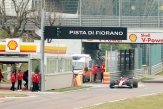
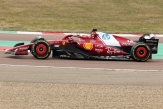
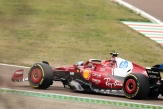
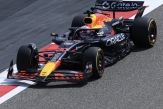
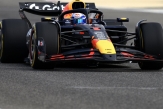
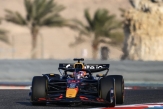

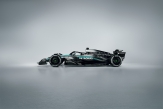
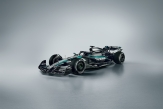
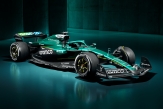
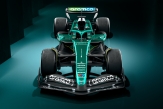
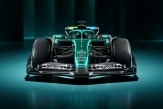
.jpg)
.jpg)
.jpg)

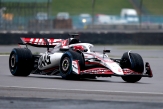

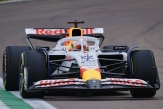
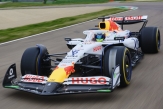
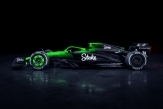
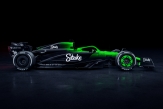

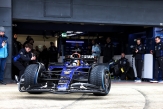
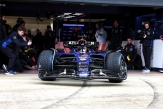
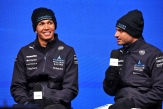

02/12/2025 от Огнян Тенчев (drJeckyll), няма коментари